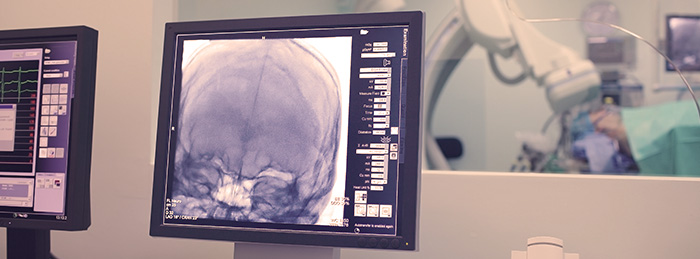Understanding Strokes and the Lifesaving Role of Air Medical Services
Strokes are a leading cause of disability worldwide and represent one of the most urgent medical emergencies, where swift recognition and immediate medical treatment can drastically alter outcomes. What is a stroke? A stroke occurs when the blood supply to part of the brain is either interrupted or reduced, leading to a deprivation of oxygen and nutrients, causing brain cells to die within minutes. Two main types of strokes affect individuals: ischemic strokes, caused by blood clots obstructing blood flow to the brain, and hemorrhagic strokes, resulting from bleeding within or around the brain.
Medical Emergencies: The Complexity of Strokes
Ischemic strokes account for approximately 87% of all stroke cases and occur when arteries to the brain become narrowed or blocked, causing severely reduced blood flow (ischemia). Hemorrhagic strokes, though less common, are often more deadly and happen when a weakened blood vessel bursts. Both types of strokes demand immediate medical attention to prevent extensive brain damage and long-term disability.
Recognizing the signs of a stroke early – such as sudden numbness or weakness, particularly on one side of the body, confusion, trouble speaking, understanding speech, difficulty seeing, trouble walking, dizziness, loss of balance or coordination, and severe headache with no known cause – is crucial. These stroke symptoms necessitate swift action. The concept of the “golden hour” in medical emergencies is especially relevant to stroke victims, where timely treatments can significantly improve survival rates and recovery outcomes.
The Stroke Chain of Survival
The ‘Stroke Chain of Survival,’ a concept supported by stroke care advocates, including the American Stroke Association, emphasizes the critical steps in stroke care, from the initial recognition of symptoms to post-stroke rehabilitation. This chain begins with the rapid identification of stroke signs and continues through emergency calls, pre-hospital care, acute stroke treatments, and rehabilitation. Air Medical and air ambulance services can be vital in this chain, ensuring a seamless transition from pre-hospital care to receiving acute treatments at specialized facilities.
Bridging the Gap with Air Medical Services
In rural and remote areas, quickly accessing specialized stroke care facilities can be daunting. Air Medical Services efficiently perform on-site evaluations for patients showing signs of a stroke, making immediate decisions on the necessary care pathway. The capability to identify patients with positive stroke assessments and quickly transport them to a “Comprehensive Stroke Center” notably reduces the “time to intervention,” which is crucial for improving stroke patient outcomes. Directly moving patients to facilities equipped for comprehensive care often streamlines their treatment process, enhancing the likelihood of a successful recovery.
In situations involving transfers between facilities, Air ambulance services are essential for maintaining the continuum of care. They ensure that patients who have started receiving thrombolytic therapy, known as “clot busters,” at a previous facility can continue their treatment without interruption during flight. Administering thrombolytics promptly is key to minimizing brain damage and aiding recovery, making the ability of air medical teams to continue or initiate such treatments in transit invaluable. This approach underscores the importance of swift action and specialized transport for stroke patients, highlighting the critical role of air med services in facilitating timely access to appropriate care.
Expanding Stroke Awareness and Education
Education on stroke symptoms and immediate response is paramount in improving stroke outcomes for those going through the medical emergency. Community programs and public health campaigns are crucial in raising awareness about stroke signs and the necessity of calling emergency services without delay. Increased public knowledge can significantly enhance the effectiveness of the Stroke Chain of Survival by ensuring that potential stroke victims receive timely care.
Financial Peace of Mind with Air Ambulance Membership Programs
When strokes happen, and considering the potential financial burden of air medical transport, air ambulance membership programs like PHI Cares provide an invaluable service. Learn more about how PHI Cares membership works in case of an emergency. These programs cover the expenses not paid by insurance for air medical transport by PHI Air Medical or its partners, alleviating financial concerns during critical times. Air ambulance memberships ensure that families can concentrate on the recovery and well-being of their loved ones without the added stress of unexpected air medical bills.
Conclusion For Stroke Symptoms and Air Ambulance Services
The intersection of stroke awareness, immediate medical intervention, and the capabilities of Air Medical services underscores a holistic approach to emergency medical care. This comprehensive strategy highlights the critical importance of time in treating strokes and showcases the innovative solutions available to overcome geographical and logistical barriers to care. By understanding the signs of a stroke, the resources available, and the lifesaving potential of Air Medical services, communities can be better prepared to act decisively in the face of this life-threatening condition. The integration of rapid transport and advanced in-flight care, coupled with the financial security offered by air ambulance membership programs, ensures that during the crucial window for stroke treatment, the focus remains firmly on saving lives and improving outcomes, making every second count towards the fight against stroke.



